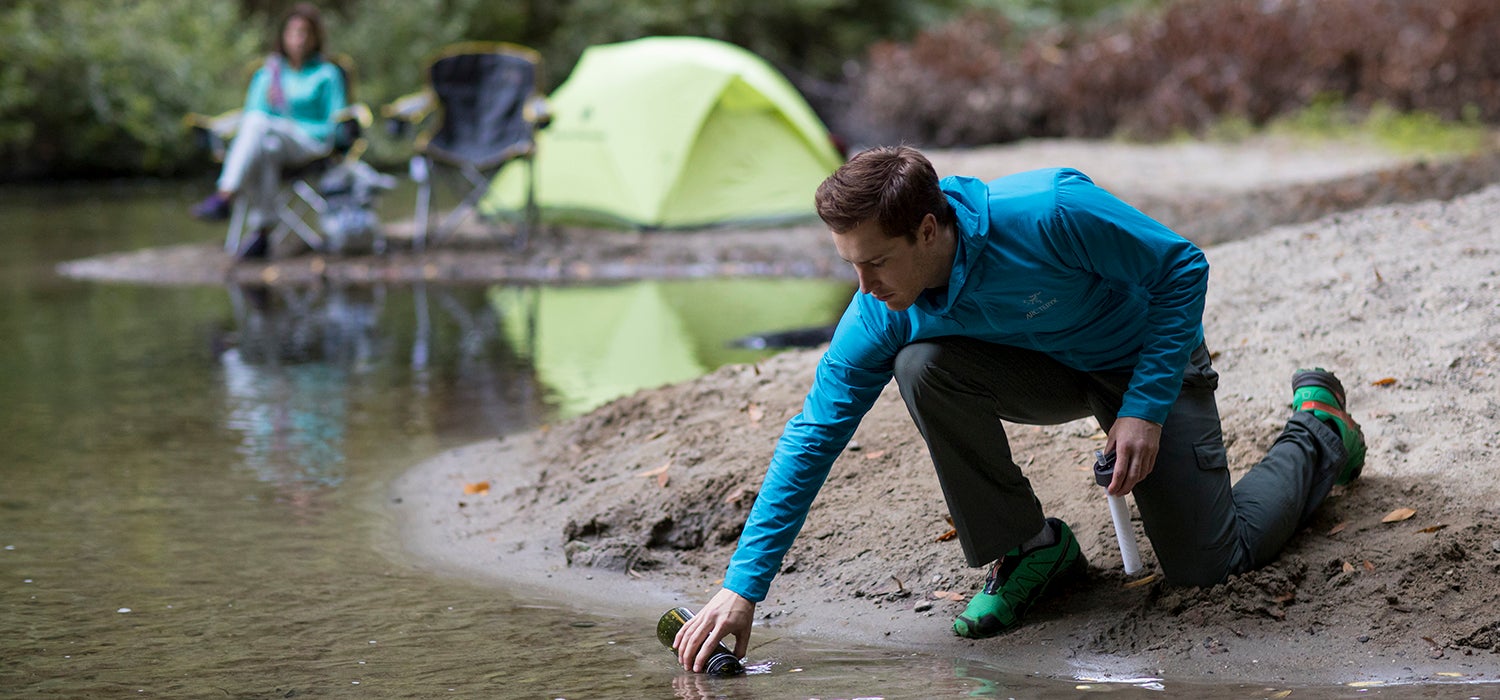Drink Safely in the Backcountry

Backcountry hikers know that nothing can ruin a trip faster than drinking unclean water. And – water-borne bacteria can lead to short- and long-term complications when you get back to your daily life. Good news! Carrying a proper water filter makes all the difference. Though filter technology can be overwhelming, some quick education can help make the choice easier.
Here are four key steps to guaranteeing your filter choice will deliver safe, great tasting water:
1. Look for testing standards
When choosing a water filter, confirm that the technologies have been tested against and meet (or exceed) NSF International and Environmental Protection Agency (EPA) standards. This will ensure that the filter you are buying meets the requirements of national scientific standards, and increases the likelihood that you will stay safe.
2. The nines matter
Read up on the effectiveness of each filter you are considering. In microbiological water treatment, it’s all about the number of nines after the decimal. There tend to be lower percentage standards for heavy metals and chemicals because it takes higher concentrations of these contaminants to cause illness. However, low dose concentrations of microbes can still make you sick, so you need the extra 9s. The NSF recommends 99.9999% bacteria removal and greater than 99.9% parasite removal. If you are considering virus removal, they recommend at least 99.99%.
3. Choose the right filtration technology
Consider your water sources and your pack weight when selecting the ideal filtration device. Microfilters remove parasites and bacteria (remember to pay attention to the 9s) and are generally effective for most backcountry activities. Ultrafilters or purifiers additionally remove viruses. Ultraviolet treatment is also an effective tool though it’s pricey, requires batteries, and doesn’t filter dirt. Unfortunately, iodine treatment and in many cases chlorine treatment are not effective at killing Cryptosporidium (Chlorine-dioxide takes up to 4 hours). Therefore, we don’t recommend chemical treatment unless it’s in combination with something else.
4. Carry a backup
Even if you are just going on a day hike, consider investing in a small, lightweight, backup microfilter – a LifeStraw personal weighs only 2 ounces – stick it in your backpack and forget it until you need it. Even the most experienced hikers and outdoor athletes find themselves in unexpected circumstances where drinking water is often number 1 for survival.